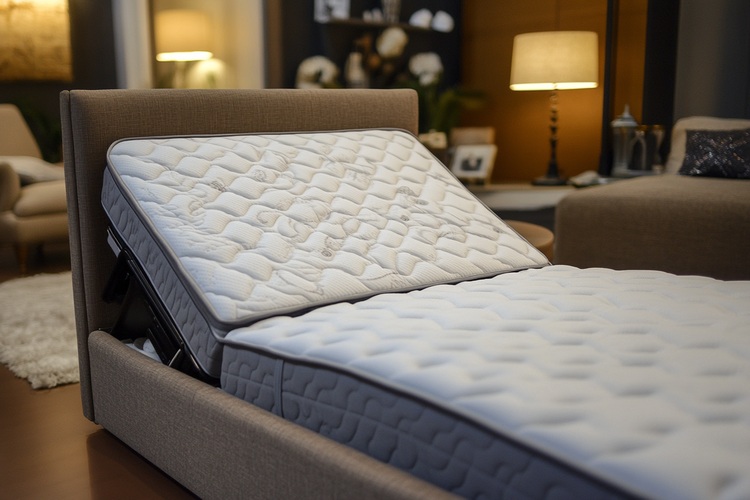Complete Bed Buying Guide: How to Choose the Perfect Bed
Choosing the right bed affects sleep, comfort, and long-term value. This guide breaks down bed sizes, frame materials, support systems, and style options to help you pick a bed that fits your room, budget, and sleep needs. Learn about mattress support, slat spacing, warranty and ownership costs before you buy.

Understanding Bed Sizes and Space Requirements
Picking the appropriate bed size is one of the first steps toward better sleep and a functional bedroom layout. Common standard mattress dimensions are: Twin (38” x 75”), Full (54” x 75”), Queen (60” x 80”), King (76” x 80”), and California King (72” x 84”). When deciding, factor in available floor space, clearance for walking and drawers, and how much personal sleeping space you want. Aim to keep at least 2 feet (about 60 cm) of clearance around the bed for easy movement and bedside access.
Consider who will sleep in the bed and how you use the room. A solo sleeper in a small apartment might prefer a Full or Queen to balance comfort and footprint, while couples often favor Queen or King sizes for added room. For longer people, a California King offers extra length.
Materials and Construction Quality
The frame material and build determine how long a bed will last and how it looks in your room. High-quality beds are typically constructed from solid wood, metal, or engineered wood composites.
- Solid wood: Offers durability, a classic look, and the potential to last many years when properly cared for. It tends to be pricier but repairs and refinishing are possible, extending lifespan.
- Metal frames: Often more affordable and lightweight. Modern metal frames can be sturdy and provide contemporary aesthetics, though lower-end metals may creak or warp over time.
- Engineered wood: A mid-range option that balances cost and design versatility. It can mimic solid wood finishes and is often used in budget-conscious or style-focused builds.
Inspect joinery, fasteners, and finish quality. A well-built frame should feel stable without wobble. Check for manufacturer specifications on weight capacity and recommended mattress types.
Support Systems and Comfort Features
A bed’s support system affects both mattress performance and sleep quality. Common support options include slatted platforms, box springs, and integrated bases.
- Slats: Proper slat spacing prevents mattress sagging. As a rule of thumb, slat gaps should be no wider than 3 inches (7.5 cm). Tighter spacing supports foam and hybrid mattresses better and extends mattress life.
- Center support rails: For Queen sizes and larger, a center support rail or leg is essential to stop frame bowing and ensure even weight distribution.
- Adjustable slat systems: Some modern frames allow you to fine-tune firmness in different zones by adjusting slats or inserts. These systems can help customize lumbar support or firmer edges where needed.
Also consider compatibility with your mattress type—memory foam, latex, innerspring, and hybrids can have different support needs. A poor support system can void mattress warranties, so check both mattress and frame manufacturer guidelines.
Design, Style, and Practical Considerations
Your bed should match your bedroom’s décor and meet your practical needs. Popular styles include sleigh beds with curving headboards and footboards, low-profile platform beds that suit minimalist spaces, traditional panel beds with classic lines, and upholstered frames that add softness and texture.
Think about additional features such as: built-in storage drawers, headboard functionality (shelving or integrated lighting), and under-bed clearance for boxes. If you plan to keep the bed for many years, choose a style that will age well with your décor preferences.
Cost Comparison and Ownership Value
Below is a quick comparison of common bed types, their typical price ranges, and expected lifespans.
| Bed Type | Average Price Range | Expected Lifespan |
|---|---|---|
| Platform Bed | $200–$1,200 | 7–10 years |
| Traditional Frame | $300–$2,000 | 8–12 years |
| Storage Bed | $400–$3,000 | 7–10 years |
| Adjustable Base | $800–$3,500 | 10–15 years |
Prices, rates, or cost estimates mentioned in this article are based on the latest available information but may change over time. Independent research is advised before making financial decisions.
A bed is an investment in daily comfort. Low-cost options can be appealing at purchase, but higher-quality materials and craftsmanship commonly result in longer useful life and better sleep. When budgeting, include delivery, assembly fees, sales taxes, and the cost of a compatible mattress or bedding. Review warranty coverage carefully—longer warranties often indicate greater confidence from the manufacturer.
Matching Bed Choice to Personal Needs
To narrow choices, list your priorities: space, budget, durability, aesthetic, and special features (e.g., storage, adjustability). If you have back or joint concerns, prioritize a supportive base and a mattress suited to your sleeping position. Couples should weigh motion isolation and edge support if one partner moves frequently.
Testing a bed in-store or buying from a retailer with a generous return or sleep trial policy reduces risk. Check customer reviews for long-term durability and comfort trends.
Final Considerations
A well-chosen bed balances dimensions, construction quality, support features, and style. Measure your room first, decide on needed clearances, and match frame type to mattress requirements. Investing a bit more upfront in a frame and support system that suit your mattress can protect that mattress and preserve sleep quality for years. Don’t forget to include delivery, assembly, and warranty details when calculating the total cost of ownership.
Taking time to compare sizes, materials, and support systems ensures you select a bed that fits your space, supports restful sleep, and remains a satisfying presence in your bedroom for the long term.






